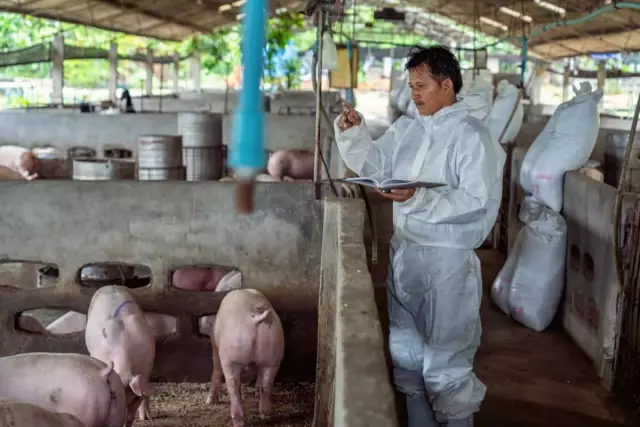- Author Rachel Wainwright [email protected].
- Public 2023-12-15 07:39.
- Last modified 2025-11-02 20:14.
Small intestine
The small intestine is located between the stomach and the cecum and is the largest section of the digestive system in length. The main function of the small intestine is the chemical processing of the food lump (chyme) and the absorption of the products of its digestion.

Structure
The small intestine is a very long (2 to 5 m) hollow tube. It starts from the stomach and ends in the ileocecal corner, at the place of its connection with the cecum. Anatomically, the small intestine is conventionally divided into three sections:
1. Duodenum. It is located in the back of the abdominal cavity and resembles the letter "C" in its shape.;
2. The jejunum. Located in the middle of the abdominal cavity. Its loops lie very loosely, covered with peritoneum on all sides. This intestine got its name due to the fact that during autopsy of corpses, pathologists almost always find it empty;
3. The ileum - located in the lower part of the abdominal cavity. It differs from other parts of the small intestine in thicker walls, better blood supply and a larger diameter.
Digestion in the small intestine
The food mass passes through the small intestine in about four hours. During this time, the nutrients contained in the food continue to be broken down by the enzymes of the intestinal juice into smaller components. Digestion in the small intestine also consists in the active absorption of nutrients. Inside its cavity, the mucous membrane forms numerous outgrowths and villi, which significantly increases the area of the suction surface. So in adults, the area of the small intestine is at least 16.5 square meters.
Small intestine functions
Like any other organ in the human body, the small intestine performs not one, but several functions. Let's consider them in more detail:
- The secretory function of the small intestine is the production of intestinal juice by the cells of its mucous membrane, which contains such enzymes as alkaline phosphatase, disaccharidase, lipase, cathepsins, peptidase. All of them decompose the nutrients contained in the chyme into simpler ones (proteins into amino acids, fats into water and fatty acids, and carbohydrates into monosaccharides). An adult secretes about two liters of intestinal juice per day. It contains a large amount of mucus, which protects the walls of the small intestine from self-digestion;
- Digestive function. Digestion in the small intestine is the breakdown of nutrients and their further absorption. Thanks to this, only indigestible and indigestible foods enter the large intestine.
- Endocrine function. In the walls of the small intestine there are special cells that produce peptide hormones, which not only regulate intestinal function, but also affect other internal organs of the human body. Most of these cells are located in the duodenum;
- Motor function. Due to the longitudinal and circular muscles, wave-like contractions of the walls of the small intestine occur, pushing the chyme forward.
Diseases of the small intestine
All diseases of the small intestine have similar symptoms and are manifested by abdominal pain, flatulence, rumbling, diarrhea. Stool is plentiful several times a day, with remnants of undigested food and a lot of mucus. Blood in it is extremely rare.
Among the diseases of the small intestine, its inflammation is most often observed - enteritis, which can be acute or chronic. Acute enteritis is usually caused by pathogenic microflora and, with full treatment within a few days, ends with a full recovery. With long-term chronic enteritis with frequent exacerbations, patients develop extraintestinal symptoms of the disease due to impaired absorption of the small intestine. They complain of weight loss and general weakness, often they have anemia. Deficiency of B vitamins and folic acid leads to cracks in the corners of the mouth (seizures), stomatitis, glossitis. Insufficient intake of vitamin A in the body is the cause of corneal dryness and impaired twilight vision. Disorders of calcium absorption can cause the development of osteoporosis and pathological fractures arising on its background.
Small intestine rupture
Of all the organs of the abdominal cavity, the small intestine is most susceptible to traumatic injury. This is due to the insecurity and considerable length of this section of the intestine. Isolated rupture of the small intestine is observed in no more than 20% of cases, and more often it is combined with other traumatic injuries of the abdominal organs.
The most common mechanism of traumatic injury to the small intestine is a direct and sufficiently strong blow to the abdomen, leading to the pressing of the intestinal loops against the pelvic bones or spine and damage to their walls.
When the small intestine is ruptured, more than half of the victims have a state of shock and significant internal bleeding.
The only treatment for a ruptured small intestine is emergency surgery. In the course of surgery, bleeding is stopped (hemostasis), the source of intestinal contents entering the abdominal cavity is eliminated, normal intestinal permeability is restored and the abdominal cavity is thoroughly sanitized.
The earlier from the moment of injury of the small intestine, the operation is performed, the more chances for the victim to recover.
Found a mistake in the text? Select it and press Ctrl + Enter.






